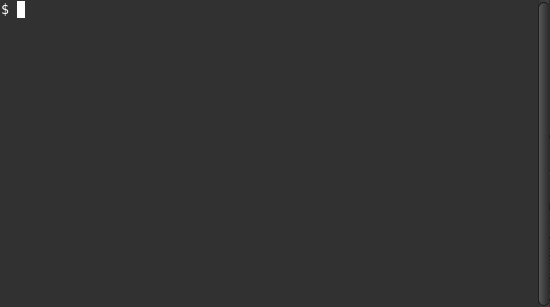Datok - Finite State Tokenizer

Implementation of a finite state automaton for fast natural language tokenization, based on a finite state transducer generated with Foma.
References
Please cite this work as:
Diewald, N. (2022): Matrix and Double-Array Representations for Efficient Finite State Tokenization. In: Proceedings of the 10th Workshop on Challenges in the Management of Large Corpora (CMLC-10) at LREC 2022. Marseille, France.
The library contains sources for a german tokenizer based on KorAP-Tokenizer.
For speed and quality analysis in comparison to other tokenizers for German, please refer to this article:
Diewald, N./Kupietz, M./Lüngen, H. (2022): Tokenizing on scale - Preprocessing large text corpora on the lexical and sentence level. In: Proceedings of EURALEX 2022. Mannheim, Germany.
The benchmarks can be reproduced using this test suite.
Tokenization
Usage: datok tokenize --tokenizer=STRING <input>
Arguments:
<input> Input file to tokenize (use - for STDIN)
Flags:
-h, --help Show context-sensitive help.
-t, --tokenizer=STRING The Matrix or Double Array Tokenizer file
--[no-]tokens Print token surfaces (defaults to true)
--[no-]sentences Print sentence boundaries (defaults to true)
-p, --token-positions Print token offsets (defaults to false)
--sentence-positions Print sentence offsets (defaults to false)
--newline-after-eot Ignore newline after EOT (defaults to false)
The special END OF TRANSMISSION character (\x04) can be used to mark the end of a text.
Caution: When experimenting with STDIN and echo, you may need to disable history expansion.
Conversion
Usage: datok convert --foma=STRING --tokenizer=STRING
Flags:
-h, --help Show context-sensitive help.
-i, --foma=STRING The Foma FST file
-o, --tokenizer=STRING The Tokenizer file
-d, --double-array Convert to Double Array instead of Matrix
representation
Conventions
The FST generated by Foma must adhere to the following rules, to be converted by Datok:
- Character accepting arcs need to be translated only to themselves or to ε (the empty symbol).
- Multi-character symbols are not allowed, except for the
@_TOKEN_BOUND_@, that denotes the end of a token. - ε accepting arcs (transitions not consuming any character) need to be translated to the
@_TOKEN_BOUND_@. - Two consecutive
@_TOKEN_BOUND_@s mark a sentence end. - Flag diacritics are not supported.
- Final states are ignored. The
@_TOKEN_BOUND_@marks the end of a token instead.
A minimal usable tokenizer written in XFST and following the guidelines to tokenizers in Beesley and Karttunen (2003) and Beesley (2004) would look like this:
define TB "@_TOKEN_BOUND_@"; define WS [" "|"\u000a"|"\u0009"]; define PUNCT ["."|"?"|"!"]; define Char \[WS|PUNCT]; define Word Char+; ! Compose token bounds define Tokenizer [[Word|PUNCT] @-> ... TB] .o. ! Compose Whitespace ignorance [WS+ @-> 0] .o. ! Compose sentence ends [[PUNCT+] @-> ... TB \/ TB _ ]; read regex Tokenizer;
Hint: For development it's easier to replace
@_TOKEN_BOUND_@with a newline.
Building
To build the tokenizer tool, run
$ go build ./cmd/datok.go
To create a foma file from the example sources, first install Foma, then run in the root directory of this repository
$ cd src && \ foma -e "source de/tokenizer.xfst" \ -e "save stack ../mytokenizer.fst" -q -s && \ cd ..
This will load and compile the german tokenizer.xfst and will save the compiled FST as mytokenizer.fst in the root directory.
To generate a Datok FSA (matrix representation) based on this FST, run
$ datok convert -i mytokenizer.fst -o mytokenizer.datok
To generate a Datok FSA (double array representation*) based on this FST, run
$ datok convert -i mytokenizer.fst -o mytokenizer.datok -d
The final datok file can then be used as a model for the tokenizer.
- This may take quite some time depending on the number of arcs in the FST and is therefore now deprecated.
Technology
Internally the FSA is represented either as a matrix or as a double array.
Both representations mark all non-word-character targets with a leading bit. All ε (aka tokenend) transitions mark the end of a token or the end of a sentence (2 subsequential ε). The transduction is greedy with a single backtracking option to the last ε transition.
The double array representation (Aoe 1989) of all transitions in the FST is implemented as an extended DFA following Mizobuchi et al. (2000) and implementation details following Kanda et al. (2018).
License
Datok is published under the Apache 2.0 License.
The german tokenizer shipped is based on work done by the Lucene project (published under the Apache License), David Hall (published under the Apache License), Çağrı Çöltekin (published under the MIT License), and Marc Kupietz (published under the Apache License).
The foma parser is based on foma2js, written by Mans Hulden (published under the Apache License).
Bibliography
Aoe, Jun-ichi (1989): An Efficient Digital Search Algorithm by Using a Double-Array Structure. IEEE Transactions on Software Engineering, 15 (9), pp. 1066-1077.
Beesley, Kenneth R. & Lauri Karttunen (2003): Finite State Morphology. Stanford, CA: CSLI Publications.
Beesley, Kenneth R. (2004): Tokenizing Transducers. https://web.stanford.edu/~laurik/fsmbook/clarifications/tokfst.html
Hulden, Mans (2009): Foma: a finite-state compiler and library. In: Proceedings of the 12th Conference of the European Chapter of the Association for Computational Linguistics, Association for Computational Linguistics, pp. 29-32.
Mizobuchi, Shoji, Toru Sumitomo, Masao Fuketa & Jun-ichi Aoe (2000): An efficient representation for implementing finite state machines based on the double-array. Information Sciences 129, pp. 119-139.
Kanda, Shunsuke, Yuma Fujita, Kazuhiro Morita & Masao Fuketa (2018): Practical rearrangement methods for dynamic double-array dictionaries. Software: Practice and Experience (SPE), 48(1), pp. 65–83.